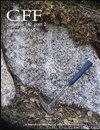Sorgenfrei–Tornquist带的反转构造:从波罗的海西南部Bornholm Gat的新海洋地震数据中获得的见解
IF 1.2
4区 地球科学
Q2 GEOLOGY
引用次数: 2
摘要
摘要:位于波罗的海西南部Bornholm Gat的新地震剖面图显示了欧洲前阿尔卑斯山脉构造线索根弗雷-托恩奎斯特带(STZ)南端一个先前特征不佳的狭窄地壳带的晚白垩世-古近纪反演和剥露。逆冲和弹出式构造沿反转轴发育,两侧有沉降槽。白垩矿床的地层分析表明,构造缩短和反转是挤压变形的结果。与反转同步形成的边缘槽与构造活动斜坡相邻,沉积物再沉积集中在该斜坡上。白垩岩单元的沉积主要由等深岩和重力驱动沉积组成,在很大程度上受到反转构造的控制,并受到底流强化的影响。我们发现异地白垩被水平沉积的本地(远洋)白垩所掩埋。侵蚀不整合面代表了马斯特里赫特阶的基底,标志着由于更具水动力的环境而导致的顺坡沉积的开始。所揭示的STZ不对称反转与褶皱收紧和NE-NW褶皱叠加证明了晚白垩世-新生代反转过程中不止一个脉冲。STZ可能属于板内前陆盆地的端元模式,这是由非洲-伊比利亚-欧洲辐合传递的远场NE-SW压缩引起的。与随后的马斯特里赫特阶相关的板内应力增强了阿尔卑斯-喀尔巴阡造山带与其前陆之间的碰撞耦合,这是公认的(例如,波兰中部海槽、波希米亚地块和中央地堑),也可能在瑞典南部的东北部达到最大程度。本文章由计算机程序翻译,如有差异,请以英文原文为准。
Inversion tectonics in the Sorgenfrei–Tornquist Zone: insight from new marine seismic data at the Bornholm Gat, SW Baltic Sea
ABSTRACT New seismic profiles located within the Bornholm Gat in the SW Baltic Sea area image Late Cretaceous-Paleogene inversion and exhumation of a previously poorly characterized narrow crustal zone in the southern end of the Sorgenfrei–Tornquist Zone (STZ), a long pre-Alpine tectonic lineament in Europe. Thrusts and pop-up structures developed along the inversion axis accompanied by subsidence troughs on its sides. Stratigraphic analysis of chalk deposits indicates that structural shortening and inversion resulted from compressional deformation. Marginal troughs formed synchronously to inversion and adjacent to the tectonically active slope, where sediment redeposition was focused. Deposition of chalk units, composed predominantly of contourites and gravity-driven sedimentation were largely controlled by inversion tectonics and influenced by intensification of bottom currents. We find that allochthonous chalk has been buried in horizontally deposited autochthonous (pelagic) chalk. An erosional unconformity represents the base of the Maastrichtian and marks the onset of along slope deposition due to a more hydrodynamic environment. The revealed asymmetric inversion across the STZ with fold tightening and superposition of NE-NW folds attest to more than one pulse during the Late Cretaceous-Cenozoic inversion. The STZ may belong to the end-member mode of intraplate foreland basins resulting from a far-field NE-SW compression transmitted from the Africa-Iberia-Europe convergence. The intraplate stress associated with the following Maastrichtian enhanced collisional coupling between the Alpine-Carpathian orogen and its foreland, which is widely recognized (e.g., the Mid-Polish Trough, the Bohemian Massif and the Central Graben), may also have had its maximum extent to the northeast in southern Sweden.
求助全文
通过发布文献求助,成功后即可免费获取论文全文。
去求助
来源期刊

Gff
地学-地质学
CiteScore
2.80
自引率
10.00%
发文量
11
审稿时长
>12 weeks
期刊介绍:
GFF is the journal of the Geological Society of Sweden. It is an international scientific journal that publishes papers in English covering the whole field of geology and palaeontology, i.e. petrology, mineralogy, stratigraphy, systematic palaeontology, palaeogeography, historical geology and Quaternary geology. Systematic descriptions of fossils, minerals and rocks are an important part of GFF''s publishing record. Papers on regional or local geology should deal with Balto-Scandian or Northern European geology, or with geologically related areas. Papers on geophysics, geochemistry, biogeochemistry, climatology and hydrology should have a geological context. Descriptions of new methods (analytical, instrumental or numerical), should be relevant to the broad scope of the journal. Review articles are welcome, and may be solicited occasionally. Thematic issues are also possible.
 求助内容:
求助内容: 应助结果提醒方式:
应助结果提醒方式:


